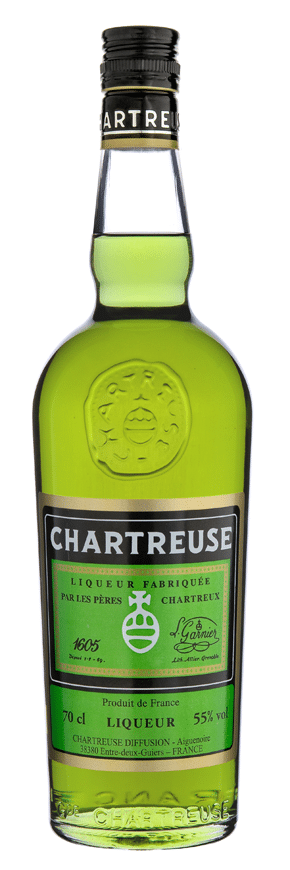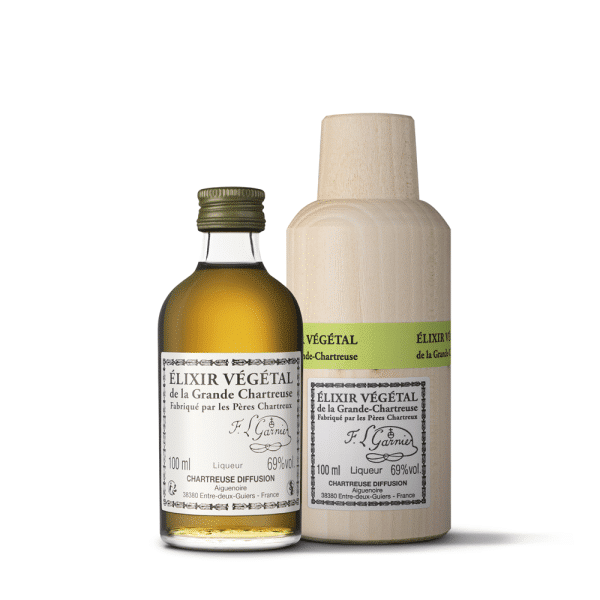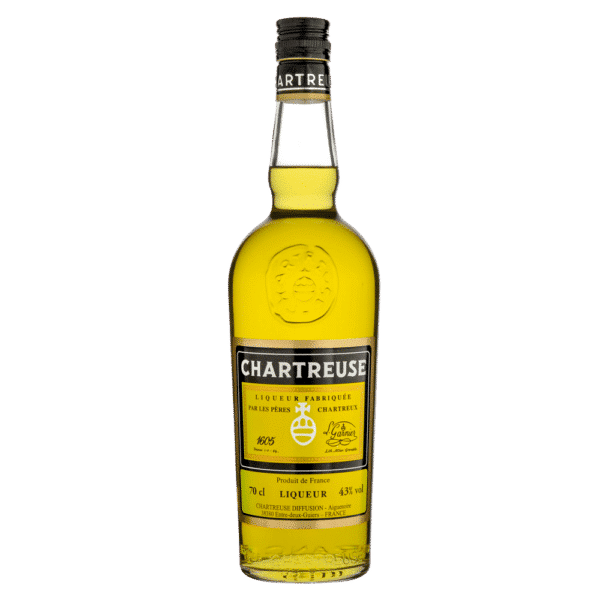
Green Chartreuse
Created in 1840, the "Liqueur de Santé" is the first liqueur made from the original recipe of the Elixir Végétal de la Grande Chartreuse. It was so popular that Father Garnier, attorney and responsible for the liqueurs at the time, later decided to officially name it 'Chartreuse Verte', and registered the “Chartreuse” mark in 1852. It is still produced and manufactured today by the Chartreux Fathers in their Aiguenoire distillery in Entre-Deux-Guiers (Isère - France).
Ingredients
Alcohol, sugar, water, vegetable substances (130 plants, bark, roots, spices and flowers).
Degrés d'alcool
55 % vol.
Bottle presentation
3cl, 20cl, 35cl, 70cl, 300cl - Characteristic bottle of the Chartreuse liqueurs. Neck swelled with the seal of the Grande Chartreuse in relief.
Nutritional informations
Elaboration
'Chartreuse Verte' derives its unique character from its natural color, its power and its aromatic complexity from 130 plants, flowers, bark, roots and spices.
Its development requires several weeks of work and is done in various stages:
- Grinds made by the monks in the plant room at the Grande Chartreuse monastery.
- Distillation to obtain the aroma.
- Different types of maceration that extract the active ingredients from the plants and give the liquor its natural color.
It then ages for a long time in truncated cone-shaped oak vats before being bottled, and continues to evolve and develop its complexity in the bottle.
Its development requires several weeks of work and is done in various stages:
- Grinds made by the monks in the plant room at the Grande Chartreuse monastery.
- Distillation to obtain the aroma.
- Different types of maceration that extract the active ingredients from the plants and give the liquor its natural color.
It then ages for a long time in truncated cone-shaped oak vats before being bottled, and continues to evolve and develop its complexity in the bottle.
Tasting notes
A Chartreuse green color, a powerful herbaceous, peppery nose.
A fresh palate with minty notes, pine sap and citrus fruits.
Bittersweet tea at the end of the mouth prolongs the tasting.
CONSUMER TRENDS :As a digestif, to discover all the flavors and aromatic power. Serve ideally chilled between 12 ° and 13 ° or on ice.
Used as an ingredient in cocktails or in cooking in sweet or savory recipes since the 19th century, it brings a unique character.
__
Photo © Stéphane Couchet
A fresh palate with minty notes, pine sap and citrus fruits.
Bittersweet tea at the end of the mouth prolongs the tasting.
CONSUMER TRENDS :As a digestif, to discover all the flavors and aromatic power. Serve ideally chilled between 12 ° and 13 ° or on ice.
Used as an ingredient in cocktails or in cooking in sweet or savory recipes since the 19th century, it brings a unique character.
__
Photo © Stéphane Couchet



